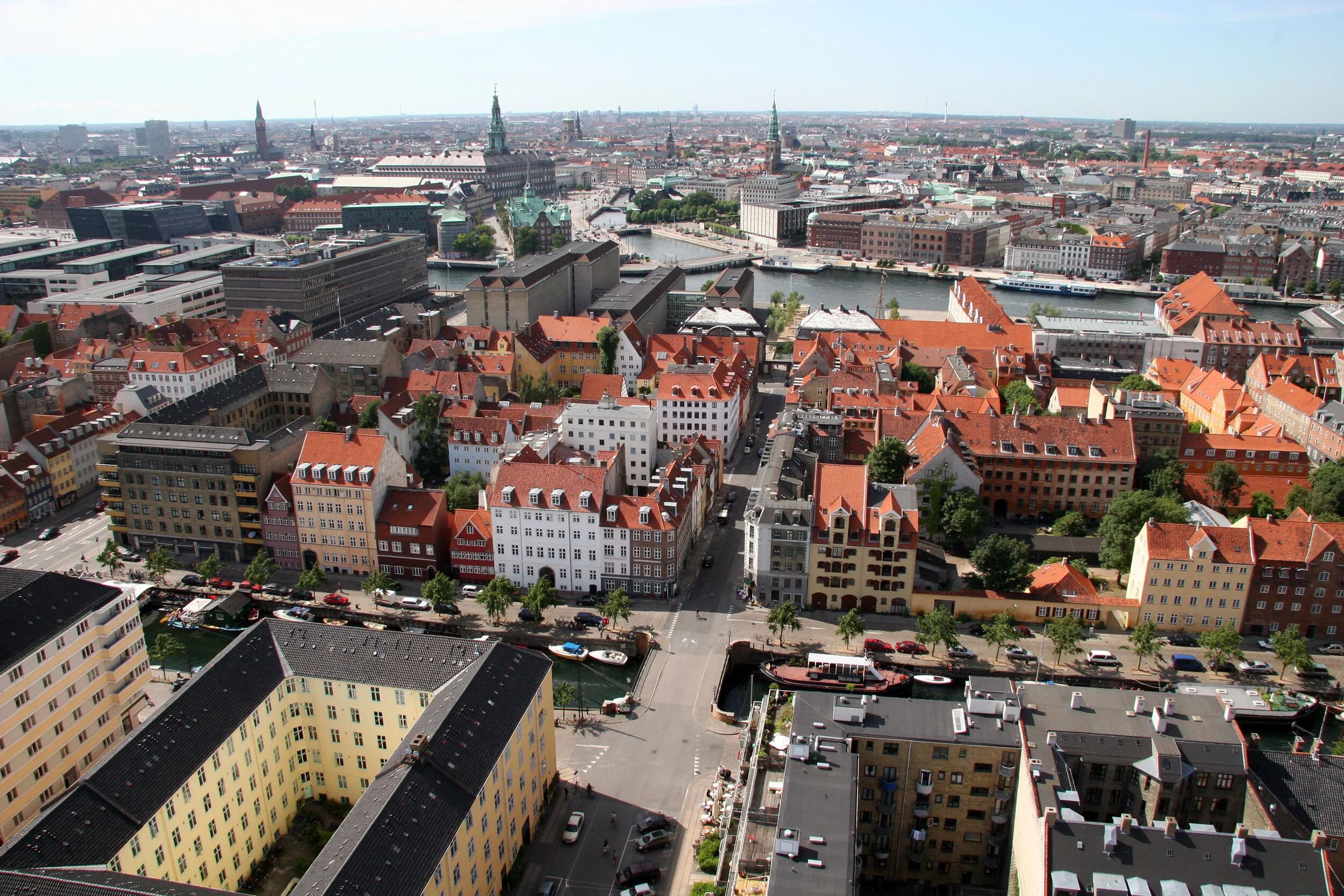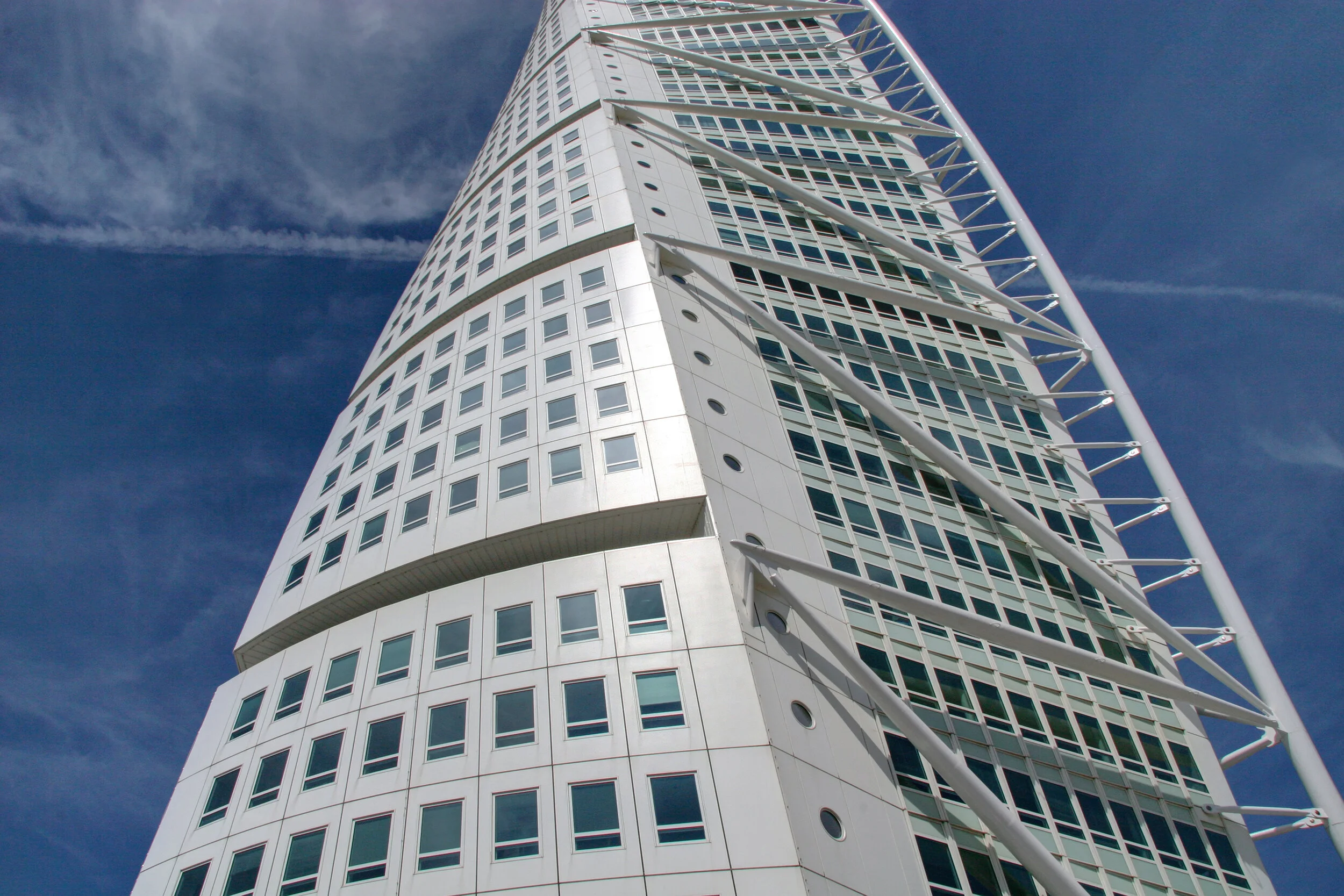
Page 2 of 10
Copenhagen, Denmark
And the bridges will burn at the end, at the end of the world- how will we cross the seas
From Lübeck, a regularly scheduled Danish train makes the direct trip to Copenhagen- one that starts on land, then boards a ferry for an hour long ride across the edge of the Baltic Sea, then returns to land to make it all the way to København Hovedbanegård, the main rail station near the heart of the city, five minutes away from my efficient, tiny roomed hotel and right across the street from Tivoli.
Once you get to Denmark there are no worries, everyone loves Copenhagen. Colorful houses, scenic canals, pedestrian streets, that mermaid statue that everyone somehow feels the need to see- it's all there waiting just for you.
From atop the fun, spiral steeple at the Church of our Savior (Vor Frelers Kirke), Copenhagen looks like any other city in that part of Europe. Lots of dense housing and office blocks, plenty private courtyards, some water, lots of (other) church steeples, some taller buildings out at the city's edges, everything you have already come to expect. What sets Copenhagen apart is down at street level, where all of the other expected elements (killer bicycles, tiny cars, sidewalk cafes) combine with a sense of history and design to create a place where a fun, spiral steeple can somehow feel completely appropriate.
An extension to the Danish Royal Library (Danes are still really into that whole Royal thing), the so called Black Diamond was the big important new waterfront building, at least until the Opera House (designed by Henning Larsen Tegnestue) opened last year. The main mass of the obviously black building sits on the water, with a series of pedestrian skybridges connecting back to the original Danish Royal Library and saving locals all that time waiting for the walk/don't walk sign to change at busy Christians Brygge below.
Directly behind the Danish Royal Library, a series of formal courtyards and historic buildings connect all the way to Christiansborg Castle, the home of the Danish Parliament and the only thing protecting the Danish people from the whims of a despotic and irrational queen. This is one of the government buildings between, one of my favorites yet one that I have little to no idea what it actually is.
Henning Larsen Tegnestue's Opera House, as seen from across the channel and from where most of the audience really is.
A danger about traveling in the early summer (and especially in Scandinavia) is a constantly longer day and inversely shorter night. Sure, normally you would think that was a good thing, longer days mean more useable sunlight- but it also meant later and shorter nights, something which slowly started to screw with whatever accurate internal clock I may have had after crossing so many time zones. It also made things like waiting to take night shots an increasingly difficult proposition. This is a picture of the Chinese Garden at Tivoli Gardens, a surprisingly small urban amusement park and the best place to be in Copenhagen, even on a Friday night that featured a free concert by an especially derivative local Danish rock band. When it gets dark (after a long wait), the lights come on and the place transforms into something even more special, more magical, more of what you thought it would always be.

